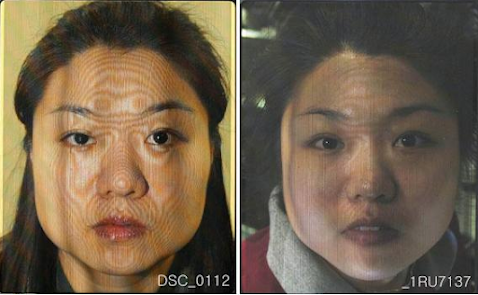Elasticity & Gravity – Skin elasticity needs to be upkept as going into space isn’t an option
According to the law of universal gravity discovered by Newton, all objects living on Earth are affected a gravitational pull. We live under a gravitational force that pulls us downward toward the ground. The skin covering our face is also affected by this gravity. The reason why it still maintains the shape surrounding the facial skeleton even with this gravitational pull is due to the elasticity of skin itself. Although it is not apparent it is being stretched, the effect of gravity on skin has an effect on the face shape.
[Image source: Google]
In 2008, the International Space Station (ISS) located 385 kilometers off the ground conducted a body change experiment on Lee So-yeon, the first Korean astronaut. It involved taking images of her face with special filming equipment to observe the changes. Gravity weakens substantially in space, and a strange change occurred four days after landing on the ISS. Her face became slimmer, wrinkles on her skin like her forehead diminished, and her glabella was lifted. Her nose became shorter and higher, thus looking slimmer overall, and her face became a younger, more three-dimensional shape. As the gravitational pull on her skin diminished, the skin on her jawline was raised and slimmer while the skin on her forehead, nose and front cheeks became more voluminous, adding dimension to her face.
If you think about it the other way around, due the gravity we usually have, we're living with a wider, flatter, older-looking face than the shape of the skeleton itself.
We need to find ways to defy gravity as going into outer space for our older looking face isn’t feasible. As I mentioned briefly earlier, the way to do this is to maintain or restore elasticity.
There are two important factors that determine the face line (facial contour). One is the facial bones that form the basic skeleton and the other is the soft tissue (skin, subcutaneous fat, fascia, muscles, etc.) that covers it. Attractive face lines appear when these two factors form a good shape that is balanced. Among the two important factors determining the facial shape, the soft tissue part is especially related to aging. In particular, a key change in aging is stretched skin from loss of skin elasticity. Skin with lost elasticity cannot withstand the force of gravity and becomes stretched. Essentially, restoring elasticity is a key factor in preventing aging and maintaining an attractive face line.
There are two main ways to restore elasticity. The first is to boost the elasticity of skin itself, and the other is to remove the excess by pulling up the slack.
[Image source: Google]
In order to improve the elasticity in skin itself, the skin, subcutaneous fat and fascia, etc. need to be stimulated with energy to promote regeneration to increase elasticity. Common examples include high-frequency treatment using high-frequency, elasticity laser using ultrasonic energy, and injection therapy which induces regeneration by injecting components of skin. Each functions on a different area with a different mechanism, so various methods can be used as appropriate depending on the degree of sagging. To pull up any sagging, there is the simple method of thread lifting or method of incisional lifting (facelift) wherein sagging areas are pulled up, then the remaining excess removed.
With so many means of lifting, when wanting to restore elasticity, it is recommended to receive lifting more systematically and comprehensively through detailed diagnosis and consultation with experts.
The face shape can be transformed fundamentally through facial bone surgeries such as facial contouring or orthognathic surgery. Because facial bone surgery is done on bones, it doesn’t seem particularly related to elasticity, but that isn’t the case at all. If you reduce the facial structure with facial contouring or orthognathic surgery, the elasticity of the surrounding soft tissue needs to cope with the reduction of bone, but this makes the desired change in face shape possible. Ultimately, surgery should be planned carefully considering not only the change in bone shape at the time of bone surgery, but also the state of skin elasticity of the person receiving surgery, and how to improve it if the skin lacks elasticity to achieve good results in the end.
#drjinsoolee #facelineplasticsurgeryclinic #drjinsoolee’sessays #plasticsurgeryessay #lifting #elasticlifting #skinelasticity #orthognathicsurgery #facialcontouring #upkeepelasticity





Comments
Post a Comment